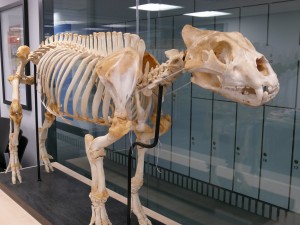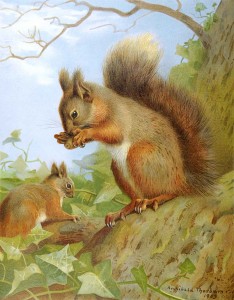This morning we waved goodbye to the tiger who spent the last few months keeping a watchful eye over the researchers in our archives reading room. The tiger’s journey back to the Biological and Environmental Sciences stores marked the end of a very successful project which raised the profile of the university’s natural history collections in a cross-campus exhibition.

Working with students and staff from Biological and Environmental Sciences highlighted to us how valuable our collections could be for the study of the natural world. This academic input showed us the value of our nineteenth century wildlife books for studying the changes in species numbers and distribution in the past 100+ years. For example, in our copy of J. G. Millais’ The Mammals of Great Britain and Ireland from 1905 the ‘Common Squirrel’ is depicted as a cute little red squirrel and not today’s ubiquitous grey variety.

A small archive collection of the papers of a local amateur naturalist, Ian Crockart, which sat unused on our shelves for many years, revealed material of great importance for the study of butterflies in Scotland. On investigating the collection the students involved in the project noted the detailed records of sightings of butterflies in the local area kept by Crockart during the early 1970s. Accurate, comprehensive records of this nature are very rare for past decades and the value of this material for comparative studies of butterfly populations in the Stirling area has now been identified by Butterfly Conservation Scotland.

While the physical displays have now been packed away it should be noted that a permanent online gallery of illustrations from our special collections can be viewed on our flickr pages including colourful images of Himalayan plants, Birds of Paradise and British Sea-anemones. The permanent display cases in Biological and Environmental Sciences, in the university’s Cottrell building, will also get a colourful ‘makeover’ as exhibition graphics and images will be re-used to enhance the displays.